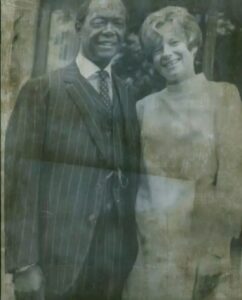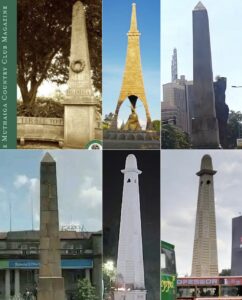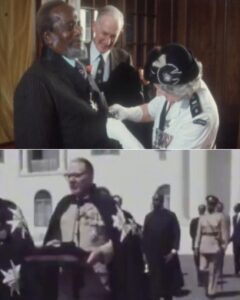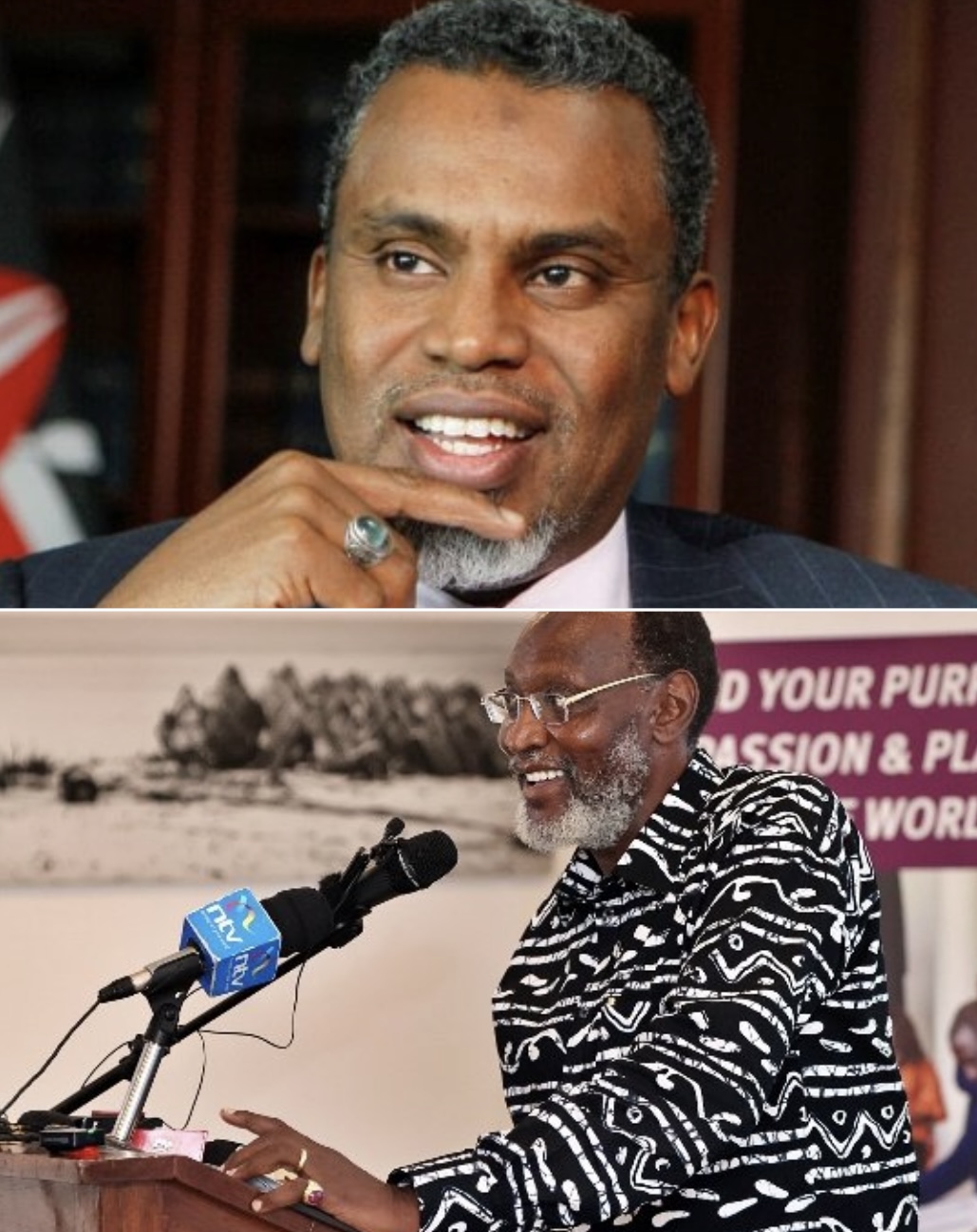The Kenyatta family, a towering pillar of Kenyan political and economic power, is deeply entwined with Freemasonry, a clandestine fraternal order of immense global reach.
A recent sighting of Muhoho Kenyatta, brother to former President Uhuru Kenyatta, wearing a Freemason ring, as noted on X, has reignited discourse about the family’s profound connections to this esoteric society. These ties have not only shaped the Kenyatta legacy but have also solidified Freemasonry’s pervasive control over Kenya, employing occult symbolism to subjugate the masses, ensnaring them in a state of enthralled submission known as “dwanze”—a term evoking a hypnotic capitulation to authority.
A Dynasty as Freemasonry’s Conduit
The Kenyatta family’s prominence commenced with Jomo Kenyatta, Kenya’s first president, who assumed power following independence in 1963. Jomo’s tenure is marked by his engagement with Freemasonry, a fraternal institution rooted in medieval Europe, renowned for its arcane rituals and extensive influence. His connections, forged through colonial networks and post-independence alliances, facilitated Freemasonry’s infiltration into Kenya’s power structures, embedding the order within the nation’s elite.
This dominion expanded under Uhuru Kenyatta’s presidency from 2013 to 2022. While Uhuru oversaw some little infrastructural advancements, his administration was saturated with Masonic symbolism, reinforcing elite control. Muhoho Kenyatta’s recent display of a ring bearing the square and compass, Freemasonry’s iconic emblem, underscores the family’s role as a linchpin for Masonic influence, preserving their wealth and authority while advancing the agenda of a global elite through occult mechanisms.
Freemasonry’s Entrenchment in Post-Colonial Kenya

Charles Njonjo: The real grand-master of freemasonry in Kenya
The transition from colonial rule to independence in 1963 marked a pivotal moment for Freemasonry’s ascendancy in Kenya. As colonial institutions underwent Africanization, an elite group of educated Kenyans, positioned to assume senior governmental roles, were initiated into the Freemason order, replacing departing white members. Many in Jomo Kenyatta’s first cabinet, alongside assistant ministers, heads of state corporations, ambassadors, and businessmen, were bound by the order’s secretive oath, ensuring the perpetuation of colonial interests. Notably, no children of Mau Mau fighters were among these ranks, meaning they didn’t want revolutionary voices but subservient faux bourgeois Africans.
Charles Njonjo, Jomo’s Attorney General and an overt Freemason, orchestrated the organization’s influence, forging ties with the Anglican Church of Kenya, an offshoot of the Church of England, itself inseparably linked to the English monarchy and its Masonic foundations.
Njonjo hated anything black beginning with the people. His fixation with whiteness, a product of self-hate possibly stemming from prejudice endured as a black man studying law at Fort Hare College in apartheid-era South Africa, led him to embrace anti-Africanism. So steep was he in self-hate that he married a white woman to manifest his extreme loath for black people.
His role as Freemasonry’s gatekeeper in Kenya amplified the order’s reach. Freemasonry, a Christian fraternal order, welcomes members of diverse creeds. Its York Rite, encompassing the Knights Templar, carries historical weight from the Crusades, when the Templars amassed vast power and wealth, only to be driven underground by papal decree. Fascinatingly, some narratives link Freemasonry to the “lost years” of Jesus Christ, suggesting he studied ancient mysteries in Egypt, revolving around stone masonry, or esoteric disciplines in the East, such as Thailand, where mysticism enabled miraculous abilities. These threads weave a complex nexus between Freemasonry and Christianity, illuminating its role in Kenyan society.
Occult Symbolism and the “Dwanze” Enthrallment
The term “dwanze” encapsulates the psychological and spiritual subjugation of Kenya’s masses, orchestrated through Freemasonry’s deployment of demonic and occult symbolism to enforce compliance. The Kenyatta family employs these symbols to condition the populace, cementing their dominion. Muhoho Kenyatta’s Freemason ring, emblazoned with the square and compass, stands as a blatant affirmation of this influence, symbolizing order and control, tools to keep the masses subdued. Such symbols, whether worn as jewelry or embedded in public spaces, serve as psychological warfare, subliminally conditioning Kenyans to accept their subjugation.

Nairobi is a canvas of Masonic symbolism even in places you would least expect including the Muthaiga Country Club
Nairobi, Kenya’s capital, is a canvas of Freemason symbolism. The Kenyan Parliament, a symbol of national governance, incorporates Freemason-inspired architecture, with its geometric design and an obelisk-like structure near the entrance. Obelisks, tied to ancient Egyptian occult practices, symbolize power and enlightenment in Masonic tradition. Uhuru Park, named for Kenya’s independence, features a central fountain mirroring a Masonic altar and an open, circular design evoking the all-seeing eye, a Freemason symbol of surveillance and control.
A newly erected obelisk in Nairobi’s Central Business District boldly declares Freemason dominance, representing the sun god Ra and the pursuit of hidden knowledge. Strategically placed in the city’s heart, this monument normalizes occult imagery, further entrenching Freemasonry’s hold over Kenya.
Freemasonry’s Far-Reaching Dominion

Jomo Kenyatta & Daniel Arap Moi were conferred membership in the Knight of Malta, whose Maltese cross is openly used in Freemasonry’s York Rite.
Freemasonry’s influence extends beyond symbolism, shaping Kenya’s political and economic landscape through the Kenyatta family’s sway. Jomo Kenyatta entrusted Masons to run his government, a practice continued by Daniel Arap Moi. Historical footage from British Pathe shows both leaders being conferred membership in the Knight of Malta, whose Maltese cross is openly used in Freemasonry’s York Rite. The 1982 coup attempt’s aftermath revealed the protective power of Masonic bonds, with Charles Njonjo spared during Moi’s ruthless purge of opposition, a testament to the fraternity’s loyalty, which borders on mind control.
Freemasonry’s growth in Kenya has been exponential, with membership spanning men from all walks of life. Invitations reflect Kenya’s social and business dynamics, often tribal or racial – whites invite whites, Indians invite Indians, Luos invite Luos, Kambas invite Kambas – though a small cross-section transcends these divides. Jomo’s reliance on Masons extended to Uhuru’s administration and the family’s private affairs, binding them to a loyalty that perpetuates their influence. This Masonic dominion enables foreign powers and global elites to exploit Kenya’s resources, distracted by occult rituals and symbols. Economic policies favor the elite, corruption festers, and a political system suppresses dissent, keeping the masses in a “dwanze” state – a lived reality for countless Kenyans trapped in cycles of poverty and powerlessness, sustained by occult symbolism in public monuments and the Kenyatta family’s appearances.
Conclusion: A Call for Liberation
Muhoho Kenyatta’s Freemason ring has reignited scrutiny of the Kenyatta family’s role in Kenya’s entanglement with Freemasonry. From the Parliament Buildings to Uhuru Park and the new obelisk in Nairobi’s Central Business District, the capital is a landscape of Masonic symbols designed to enthrall the populace. These narratives demand transparency and accountability in Kenyan governance. Dismantling Freemasonry’s occult dominion, which the Kenyatta family and other elites wield to maintain power, requires a collective awakening – challenging the symbols, systems, and structures that have long defined Kenya’s political terrain.
Only through such resolve can the nation reclaim its sovereignty and forge a path toward true emancipation.

